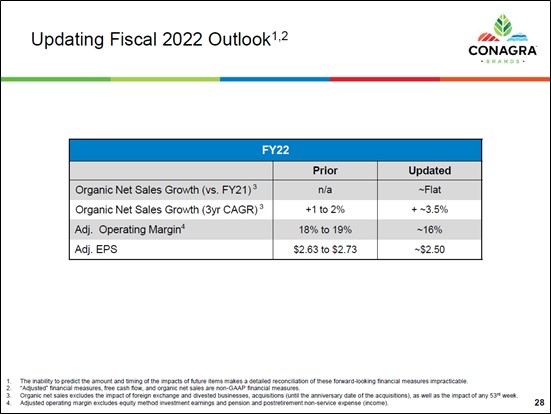The China Factor: Automotive Brands Facing Headwinds In The Chinese Market

Table of Contents
Intense Domestic Competition
The Chinese automotive market is fiercely competitive, and a major headwind for international brands is the rapid rise of domestic automakers.
Rise of Chinese Automakers
Chinese brands like BYD, Nio, and Xpeng are no longer also-rans; they're serious contenders, rapidly gaining market share and pushing technological boundaries.
- Increased Market Share of Domestic Brands: Domestic brands are aggressively capturing market share, fueled by innovative designs, competitive pricing, and strong government support. Their growth directly impacts the market share of established international players.
- Technological Innovations (EVs, Autonomous Driving): Chinese automakers are leading the charge in electric vehicles (EVs) and autonomous driving technologies, often surpassing international competitors in certain areas. This technological prowess is a major competitive advantage.
- Government Support and Subsidies: The Chinese government actively promotes the growth of domestic automakers through various subsidies, tax breaks, and favorable regulations, creating a challenging environment for foreign brands.
Price Wars and Competitive Pricing
The Chinese automotive market is notorious for its price wars. Both domestic and international brands engage in aggressive pricing strategies, often leading to razor-thin profit margins.
- Price Wars: Intense competition has resulted in frequent price wars, significantly impacting profitability for all players.
- Discounting Strategies: To remain competitive, companies frequently resort to deep discounting and promotional offers, further eroding profit margins.
- Impact on Profitability: The pressure to compete on price necessitates stringent cost optimization measures for international brands to maintain profitability.
- Need for Cost Optimization: International brands must implement highly efficient cost-cutting strategies to counter the impact of competitive pricing and maintain profitability.
Shifting Consumer Preferences
Understanding and adapting to the evolving preferences of Chinese consumers is critical for success.
Demand for Electric Vehicles (EVs)
China is a global leader in the adoption of electric vehicles. The demand for EVs is surging, pushing international brands to rapidly electrify their product portfolios.
- Government Incentives for EVs: The Chinese government offers substantial incentives to encourage EV adoption, including subsidies and tax breaks.
- Consumer Preference for Electric and Hybrid Vehicles: Chinese consumers increasingly favor electric and hybrid vehicles due to environmental concerns and technological advancements.
- Charging Infrastructure Development: China's rapidly expanding charging infrastructure further supports the growth of the EV market.
Focus on Technology and Features
Chinese consumers prioritize advanced technology and connected car features. International brands must meet these expectations to remain competitive.
- Importance of Digital Connectivity: Seamless integration of digital features and connectivity is a key expectation for Chinese consumers.
- Autonomous Driving Features: Advanced autonomous driving features are highly sought after by Chinese consumers, and their availability significantly impacts purchasing decisions.
- Advanced Driver-Assistance Systems (ADAS): Features like lane keeping assist, adaptive cruise control, and automatic emergency braking are increasingly essential.
- User Interface Preferences: User-friendly and intuitive infotainment systems are crucial for attracting tech-savvy Chinese consumers.
Navigating Regulatory Hurdles
International automotive brands face significant regulatory challenges in the Chinese market.
Stricter Emission Standards
China has implemented stringent emission standards, forcing automakers to invest heavily in cleaner technologies.
- Compliance Costs: Meeting these standards requires substantial investment in research and development, impacting profitability.
- Investment in New Technologies: Automakers need to invest in new technologies such as electric powertrains and advanced emission control systems.
- Challenges in Meeting Emission Targets: The increasingly stringent emission regulations present a significant technical and financial challenge for international brands.
Import Tariffs and Trade Policies
Import tariffs and trade policies can significantly impact the pricing and profitability of international automotive brands.
- Impact on Pricing: Import tariffs increase the cost of imported vehicles, making them less competitive compared to domestically produced cars.
- Challenges of Navigating Trade Regulations: The complex regulatory landscape presents significant challenges for international brands to navigate.
- Potential for Trade Disputes: Changes in trade policies and potential trade disputes can create further uncertainty and risks for international automakers.
Conclusion
The China factor presents a complex interplay of intense domestic competition, rapidly evolving consumer preferences, and challenging regulatory hurdles for automotive brands. Successfully navigating this landscape requires a deep understanding of these dynamics. Key takeaways include the importance of adapting to the increasing demand for EVs, focusing on technological advancements, and effectively managing regulatory compliance. Successfully navigating the China factor requires a proactive and adaptable approach. Learn more about navigating the complexities of the Chinese automotive landscape and develop a winning strategy for this crucial market. Don't underestimate the China factor – mastering it is key to success in the world's largest automotive market.

Featured Posts
-
 Nay Golemite Khitove Na Ed Shiyrn Vdkhnoveni Ot Riana
May 06, 2025
Nay Golemite Khitove Na Ed Shiyrn Vdkhnoveni Ot Riana
May 06, 2025 -
 Zijvo Mnyer Adrbyejanin Patmakan Aknark Yev Apaga
May 06, 2025
Zijvo Mnyer Adrbyejanin Patmakan Aknark Yev Apaga
May 06, 2025 -
 Celtics Vs 76ers Game Prediction Odds Stats And Expert Analysis Feb 20 2025
May 06, 2025
Celtics Vs 76ers Game Prediction Odds Stats And Expert Analysis Feb 20 2025
May 06, 2025 -
 Copper Market Volatility Impact Of China Us Trade Discussions
May 06, 2025
Copper Market Volatility Impact Of China Us Trade Discussions
May 06, 2025 -
 Why Did Patrick Schwarzenegger And Abby Champion Delay Their Wedding
May 06, 2025
Why Did Patrick Schwarzenegger And Abby Champion Delay Their Wedding
May 06, 2025
